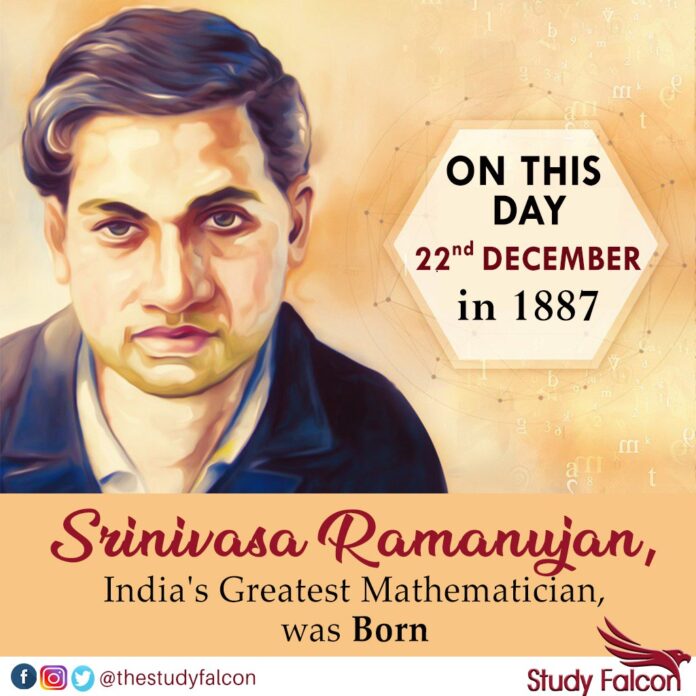Srinivasa Ramanujan was an Indian mathematician who made great and original contributions to many mathematical fields, including complex analysis, number theory, infinite series, and continued fractions including solutions to mathematical problems then considered unsolvable. In 1913, the English mathematician G. H. Hardy received a strange letter from an unknown clerk in Madras, India. The ten-page letter contained about 120 statements of theorems on infinite series, improper integrals, continued fractions, and number theory. Recognizing Ramanujan’s work as extraordinary, Hardy arranged for him to travel to Cambridge. In his notes, Hardy commented that Ramanujan had produced ground breaking new theorems, including some that “defeated me completely; I had never seen anything in the least like them before”, and some recently proven but highly advanced results.
Ramanujan was born in his grandmother’s house in Erode, a small village about 400 km southwest of Madras (now Chennai).
When he was nearly five years old, Ramanujan entered the primary school in Kumbakonam. In 1900 he began to work on his own on mathematics summing geometric and arithmetic series. Ramanujan was shown how to solve cubic equations in 1902 and he went on to find his own method to solve the quartic. The following year, not knowing that the quintic could not be solved by radicals, he tried (and of course failed) to solve the quintic.
When he was 15 years old, he obtained a copy of George Shoobridge Carr’s Synopsis of Elementary Results in Pure and Applied Mathematics. This collection of thousands of theorems, many presented with only the briefest of proofs and with no material newer than 1860, aroused his genius. Having verified the results in Carr’s book, Ramanujan went beyond it, developing his own theorems and ideas. In 1903 he secured a scholarship to the University of Madras but lost it the following year because he neglected all other studies in pursuit of mathematics.
During his short life, Ramanujan independently compiled nearly 3,900 results (mostly identities and equations).Many were completely novel; his original and highly unconventional results, such as the Ramanujan prime, the Ramanujan theta function, partition formulae and mock theta functions, have opened entire new areas of work and inspired a vast amount of further research.Nearly all his claims have now been proven correct. The Ramanujan Journal, a scientific journal, was established to publish work in all areas of mathematics influenced by Ramanujan, and his notebooks containing summaries of his published and unpublished results have been analysed and studied for decades since his death as a source of new mathematical ideas. As late as 2011 and again in 2012, researchers continued to discover that mere comments in his writings about “simple properties” and “similar outputs” for certain findings were themselves profound and subtle number theory results that remained unsuspected until nearly a century after his death He became one of the youngest Fellows of the Royal Society and only the second Indian member, and the first Indian to be elected a Fellow of Trinity College, Cambridge. Of his original letters, Hardy stated that a single look was enough to show they could have been written only by a mathematician of the highest calibre, comparing Ramanujan to mathematical geniuses such as Euler and Jacobi.
Ramanujan’s years in England were mathematically productive, and he gained the recognition he hoped for. Cambridge granted him a Bachelor of Science degree “by research” in 1916. But the alien climate and culture took a toll on his health. Ramanujan had always lived in a tropical climate and had his mother (later his wife) to cook for him: now he faced the English winter, and he had to do all his own cooking to adhere to his caste’s strict dietary rules. Wartime shortages only made things worse. In 1917 he was hospitalized, his doctors fearing for his life. By late 1918 his health had improved; he returned to India in 1919. But his health failed again, and he died the next year.
The Indian mathematician had few opportunities during his lifetime to showcase his talents. Still, his passion for giving his best to mathematics did not hold him back from leaving back his legacy for the world to marvel at. He has left behind a legacy that continues to inspire mathematicians to this day.










